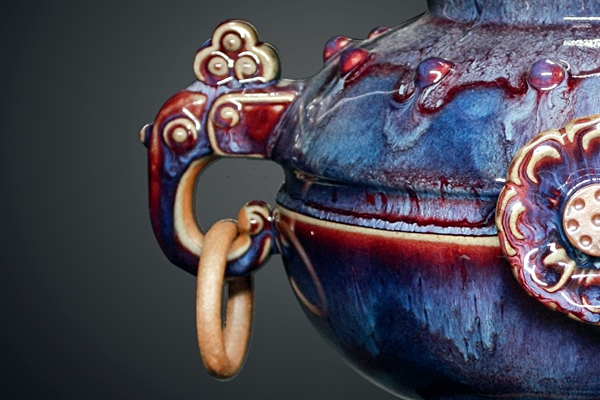The Dazzling Jun Porcelain
China Today ,January 15, 2018 Adjust font size:
There is a folk saying in China, “piles of gold aren’t worth a single piece of Jun porcelain,” which fully explains the value of Jun porcelain that has been fervently sought by Chinese collectors generation after generation. It first appeared in the Tang Dynasty (618-907), and prevailed in the Song Dynasry (960-1279), reputed as a treasure of the country.
On August 22, 2016, a Jun porcelain vase symbolizing “peaceful coexistence” is unveiled in Yuzhou, Henan Province, specifically produced for the 13th China-ASEAN Expo.
Song Emperor Huizong ordered a royal kiln to be built in Juntai in today’s Yuzhou, Henan Province, to produce porcelain wares for the palace, from which Jun porcelain got its name. Jun porcelain wares, without flashy surfaces, glow deeply and moderately, a feature that reflects the nation’s character.
What’s most renowned about Jun porcelain is the glaze transmutation that occurs during firing in the kiln. With the same glaze, the porcelain wares can display different hues and patterns during firing. Different light and angles can add more changes to a porcelain ware. In addition, the products from the same kiln don’t necessarily show the same glaze color. Even the same porcelain product can have splashes of different hues and shapes, thus making it more mystic and enchanting.
